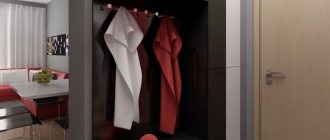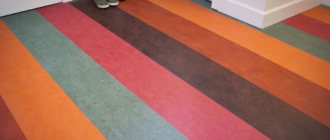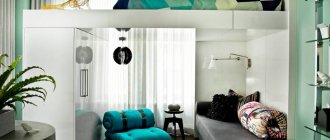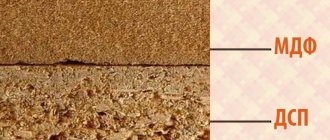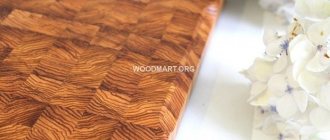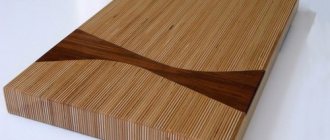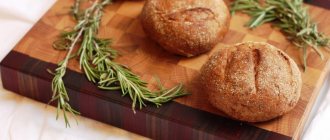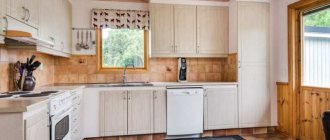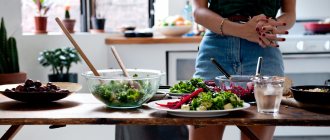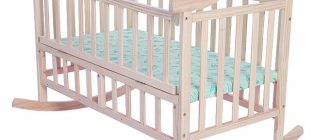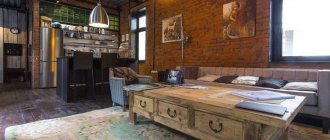Home / Painting tips / Selection rules / Paint for pine furniture
Pine furniture is very popular due to its pleasant texture, noble color and affordable price, but this species is quite soft. Such wood practically does not dry out, for example, compared to aspen. It is a universal material for the production of chairs, chests of drawers, tables, decoration and construction of houses, unlike cherry, spruce and other species. Let's take a closer look at how to paint pine furniture. After all, many people buy items made from such material unpainted in order to apply the coating themselves (in order to save money or to create a unified interior).
Types of paint for pine furniture
To give the desired color and performance properties to pine furniture, several compositions are used. This is due to the fact that wood requires certain processing due to its characteristics. However, the compositions listed below are used not only for this type of wood, but also for others. Remember that it is always worth checking whether the previous coating will be compatible with the new one. So, let’s look in order at what and why should be used when painting pine furniture.
Tinting. It is used for:
- to hide surface defects or heterogeneity by painting in a darker shade;
- highlight the wood structure and improve its natural color;
- give pine furniture the appearance of a valuable type of wood;
- get a color unusual for wood (red, blue, etc.).
Varnish or paint. Their purpose is:
- to hide surface defects;
- give the wood the desired color;
- hide the structure and texture of wood (paint) or, conversely, emphasize (varnish).
Let's consider what types of compositions are divided into.
Water-soluble paints and varnishes . Their main advantages include:
- dry quickly;
- as a rule, they do not emit harmful fumes (therefore they can be used for painting furniture for children);
- resistant to moisture;
- easy to tinting;
- After drying, the paint layer becomes frost-resistant.
It is important to know that varnishes and paints themselves should be stored in a warm room, since at low temperatures the compositions can deteriorate. As a result of painting furniture made of pine or other wood, you will get a covering coating (paint) or a transparent coating (varnish).
On organic solvents (varnishes and enamels) . They have a number of features:
- resistant to moisture;
- takes a long time to dry;
- sold at affordable prices;
- during operation they may emit a strong, unpleasant odor.
If furniture made of pine or other wood is painted with enamel, the surface will be opaque, if varnished, then transparent.
All varnishes have fairly high vapor permeability, and also leave wood (not just pine) the ability to “breathe”, namely to give and receive moisture from the environment. Such compositions are excellent for new or well-preserved furniture. Varnishes contain substances that protect wooden furniture from destruction and fading. Please note: when you need to repeat the treatment, the previously applied coating does not need to be removed (unlike paint). A fresh layer can be applied to the old one.
Benefits of wood floors
Wood is still used as a floor covering because it has a number of advantages over other coatings:
- natural plank flooring or parquet creates an atmosphere of coziness and comfort in residential premises;
- Externally, the wood is very beautiful, looks original in the photo and upon visual inspection, complementing any interior;
- some types of wood are very beneficial for the human body;
- the operational features of the material make it universal;
- the cost of the boardwalk is low, and it can also be partially repaired;
- wood can be processed using paints and various substances that improve its characteristics and protect it from the negative effects of various factors.
Next, we will talk about a type of wood such as pine, and how to cover a pine floor so that its operation will be a pleasure for every resident.
How is detarring carried out?
A special feature of pine is the presence of a large amount of resinous substances, which does not always allow paint or varnish to lie flat, so the wood must be deresined before applying the coating. Also, when a large amount of resin accumulates in a certain area, it darkens and spoils the appearance of the furniture. In addition, a sticky film appears that will prevent the primer from absorbing. This procedure involves the complete or partial removal of resinous substances. To do this, use a special solvent-based composition. It is applied with a brush, then the surface is washed and dried. If the tarred areas have a large area, then they are cut out with a knife and sealed with putty. The solvent may contain components such as:
- technical solution of acetone;
- baking soda;
- technical alcohol;
- potash;
- hot water;
- soap flakes.
Selection based on wood type
One of the essential criteria when choosing a floor covering is the type of wood that will be processed. The following information will help you choose the right foundation.
Hardwoods should be treated with products with good elasticity, which are possessed by polyurethane, urethane and alkyd-urethane bases. If the material contains tannins, then after their use the surface of the boards will most likely darken. To avoid such unpleasant consequences, before applying the coating yourself, do not forget to treat the floor with a special primer (cutting).
Oak plank floor
Beech is an unstable type of wood, so here you also cannot do without a special primer, but with slightly different characteristics. To protect and decorate pine, and all conifers in general, alkyd and urethane varnishes are chosen. According to the instructions, before the main stage of work, the floor must be wiped with a cloth soaked in gasoline - this procedure will dissolve the remaining tree resin.
Pine board covering
To neutralize essential oils in samples of exotic origin, a special composition is used, after which any type of varnish can be painted.
The only exceptions here will be those wood species that contain inhibitors that significantly slow down the drying process of the paintwork. And here again a cutting primer designed for working with heavy rocks will come to the rescue.
How to tint pine products
After high-quality tinting, furniture made of any wood usually acquires a smooth surface with a low gloss. Upon completion of the procedure, the products should dry well. Then the surface is usually coated with varnish or transparent paint. Before tinting, make sure that the following recommendations are followed.
- The surface to be treated must be well sanded.
- Before tinting, the pine is treated with a primer.
- The surface of the products should not contain dark spots or streaks of dye.
For processing, compositions are used that have light-resistant properties, are also well absorbed and easily soluble in water. The tint itself must be applied with a brush. Pay attention to what recommendations (number of layers, drying time, etc.) the manufacturer gives.
What types of doors are there?
Repainting solid wood doors is not a difficult task, but before you begin, you need to know about the characteristics of the material. Let's start with the fact that doors are made not only from solid wood. Depending on the characteristics and characteristics of the raw material, the dyeing technology also changes.
Chipboard and MDF
These are budget models that are often installed by developers in apartments with standard layouts. Such doors attract attention with an affordable price, but the quality of the material usually leaves much to be desired. Chipboard is a chipboard made from industrial waste: shavings and sawdust. The link between the components is usually formaldehyde. This substance is harmful to health, so chipboard doors cannot be called environmentally friendly.
In this regard, MDF products look more attractive. This is a wood-fiber board, which is produced using hot pressing technology. Here, wood resin is used as a binding component, so MDF doors can be installed even in children's rooms.
Paneled
In terms of their structure, such doors are considered composite - consisting of individual elements and materials. The base of paneled products is a frame made of MDF or chipboard. Panels are inserted between the trim - thin elements made of plywood.
Panels are:
- floating – equal in thickness to the framing frame;
- flat - even plates with the correct geometry;
- figarei - a convex middle, gradually decreasing towards the edge;
- overlay moldings - panels are fixed with overhead glazing beads.
Considering the design features, paneled doors are considered decorative and are often complemented by glass inserts and plastic elements.
From solid wood
These are expensive products made from valuable wood. For production, beech, hornbeam, walnut, Karelian birch, mahogany or ebony are usually used.
Panel doors made of solid solid wood are the most popular on the market. They are made from individual polished planks, which are joined together with a tongue-and-groove joint.
Less expensive doors are made from solid pine, spruce and other common species.
How to paint or varnish pine furniture
You have already chosen how to paint your pine wood furniture. Now it’s worth finding out how to do it correctly. It is better to apply the paint in several layers as it dries. Before applying the next layer, the previous one can be sanded with fine-grained sandpaper. The general procedure for painting or varnishing is as follows:
- removal of old coating, knots and other defects . A mechanical cleaning method is suitable for this. You can use brushes or sanders, as well as sand, shot, etc. If the furniture already has a varnish coating, then evaluate how durable it is. The flimsy coating must be completely removed, and the strong coating must be rinsed with warm water and dried;
- detarring . Details of the procedure can be read in the block above;
- tinting . Information on this issue is also indicated in a separate block;
- sealing cracks and chips with putty . It must be applied in a thin layer. First local, then continuous. There should be no more than three layers. And each of them should be well dried;
- applying primer . It is applied with a brush, spray gun or other tool. If you are planning a glossy surface, then the already dried primer must be treated with emery cloth. On furniture that will be used in high humidity conditions, the primer is applied with a brush. The layer should be thin in any case (compared to the outer layers of paint);
- painting with a brush, roller or airbrush . A roller can cover a large area, but it does not allow you to work with quick-drying varnishes. For these compositions it is recommended to use a brush. It is convenient to paint furniture with an airbrush, but in this case the consumption of materials may be slightly greater than when using other tools.
Without corrals - how to process and cover furniture panels. Surface preparation.
Here the other day, at the request of a good friend, I created such a shelf in the image and likeness of existing ones. Size approximately 270 by 200 mm, material - furniture board and a piece of pine board for the leg. Some people like these - it’s a little thing to put in or something else.
And I want to tell you about how to process such a craft not only to give it a marketable appearance, but also to improve resistance to the external environment - primarily water and moisture, because The shelf is designed for a “kitchen” netbook. Moreover, you can process not only a shelf - the same cutting board, a beautiful wooden spoon, or even a simple cut of a trunk, which is used as a stand for hot dishes or for cups.
While making knife handles from very beautiful and expensive materials such as Arizona ironwood and amboyna, I spotted several simple and effective recipes for processing wood on thematic forums in order to emphasize its beauty and protect it from moisture. I will share them.
Firstly, we will not talk about varnishes. I am not against this, but no varnish, in my (and not only) opinion, will give such beauty to the wood pattern and ease of restoration of mechanical damage that the use of various oils provides. Secondly, it is necessary to take into account the fact that the photographs were taken from an ordinary pine furniture panel, the beauty of which initially tends to zero. For those interested, I have entries in my journal about knives whose handles are made of more noble materials and processed in the same way. Let's call the first stage preparatory - the surface of the product is prepared for coating. Those. made as smooth as possible. Everything is clear here - sandpaper and a lot of patience. But, as in the simplest matter, there are some tricks. Like, for example, the number of sandpaper. It determines the size of the abrasive grain and, if memory serves, is measured in the number of sieve cells per square centimeter through which the abrasive is sifted. Those. paper with the number 40 is very “angry”, and with the number 600 it is “soft”, reaching a soft velvet of 2500 units, which is used for polishing.
The first rule is that the denser the wood, the more carefully the processing should be and the higher the number of the final paper should be. The paper numbers should differ approximately 2 times from each other. Those. something like this: 40 -> 80 -> 150 -> 300 -> 600 -> 1200 -> 2500. Which one to start with and which one to stop at is decided experimentally; for crafts such as furniture, it’s enough to stop at about the 300th number.
The second rule is that each subsequent sandpaper must completely remove the risks from the previous one. And nothing else. From here we can draw a conclusion about the quality of the paper itself. Just a few grains of a larger abrasive dropped onto a sheet of paper can leave noticeable marks on the surface that cannot be erased with the same sheet. But this is rather for fanatics of perfect finishing.
Rule number three - when processing surfaces, try not to hold the sandpaper “on your finger.” If it is large, then you can easily wipe out an unplanned recess on a small part or roll the necessary edge. Therefore, in such cases, it is easier to wrap it around an object of suitable size (even the same pencil) a couple of times and use it like a file.
Another important point in technology is raising the pile. The surface of the wood, no matter how smooth it is sanded, will fluff a little when wet. Thin fibers rise like bristles and, when dry, remain standing as dry stubble. The same thing will happen when covering the surface with varnish, stain or something else. Therefore, you just need to moisten the surface with water (with a rag or from a spray bottle), let it dry and go through it again with fine sandpaper (approximately 800-1000 number), removing hairs. If necessary, the operation can be repeated until the hairs stop rising after wetting. Instead of water, you can use more volatile things - alcohol or vodka.
Now the surface is ready for finishing. More about this next time.
For example, one of my knives, the handle of which was processed almost according to the technology described.
Scandinavian Mjollnir. The handle is elk horn, oak root, amboyna, fiber and brass as decoration.
Source: man-from-36.livejournal.com
TEX products
TEX materials are suitable for all types of wood. We suggest purchasing the following formulations.
Enamel for wood and metal “Profi” . Great for interior and exterior painting, painting furniture, houses and so on. Dust drying time is approximately 6–8 hours. The coating will be durable (up to 8 years). The composition itself has virtually no odor during operation.
Heavy-duty parquet ECO-VARNISH BIOTEKS. The material is water-borne and wear-resistant. It has an acrylic base. The furniture product can be fully used 12 hours after painting. If you follow the manufacturer's recommendations, consumption will be economical.
The choice of coating for pine and its application should be treated very carefully, since this furniture is sensitive to mechanical stress and other environmental factors. However, with high-quality processing, furniture made from this wood can last for many years. If you have questions on this topic, you can contact our specialist. He will help you choose the best option and also explain the nuances of the work.
Lucky
As for the choice of transparent coatings, the optimal solution is parquet varnish. It is resistant to abrasion and is not afraid of washing and exposure to sunlight.
You can also use yacht varnish. Unlike parquet, it can be used both indoors and outdoors.
In other words, the varnish tolerates weather conditions and low temperatures well. Therefore, for treating stairs in country houses that are visited seasonally or from time to time, it is even more preferable than its parquet counterpart.
